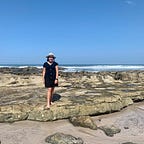A look into generations
Etüden im Schnee (Memoirs of a Polar Bear), by Yoko Tawada, is a three-part novel, presenting (among other things) the life stories of three generations of polar bears, each recounted by each successive bear, in their unique voices, and with rather different approaches.
Swooping in and out of the heads of bears and human figures in its pages, Tawada’s narrative can be seen as delightful and surprising. Humor comes from crashing the two worlds together — presenting bears holding down administrative jobs, battling writer’s block, and crossing picket lines — and the opportunity this gives Tawada to make our world strange to us. Through the eyes of polar bears, the ideas of groups or organizations and make-up are exposed as arbitrary and potentially foolish.
While potentially laughing at dry humor, this oddness enables the author to explore big questions. By bending language and stepping outside the anthropocentric framework most stories take for granted, Tawada leaves the reader dwelling on the reconsideration of concepts including nature, nationality, art, politics, and rights.
The human perspective is revealed to be one of many. — The Complete Review
The bears’ stories all examine the role of family, and differing expectations of parenthood, among other ways in which animal and human behavior differ. In modern times, we can still see family lineage struggle to adapt and adjust to an ever-changing world. While Tawada was writing about the early 20th century, many of her remarks about politics and rights are still on people’s minds today.
Etüden im Schnee thrives on border crossings between dream and reality, between the animal and human world.
The animal nature of the bears, and their “fish-out-of-water” existences is an example of Tawada repeatedly reminding us of their longing for the North Pole. The Complete Review noted that this “is particularly well-handled (on Tawada’s part), the animals readily adapting even to their cages, yet always maintaining an individualist streak and a self-confidence, grounded in their polar-bear-essence, regardless of how they are treated or perceived by others.” The interwoven connection made it harder to follow, but for the readers who could, it was a positive addition.
Each bear knew very little about their mothers, the generational disconnect presented throughout each story is one that many people might not notice today. The Complete Review noted that Knut’s bond with his human handlers (and suffers abrupt loss here too), almost pushes him to feel guilt about behaving bear-like. Similarly, Tosca shows maternal pride, even as she shows little regret about abandoning her child, which in East Germany was pretty common as she had learned. Each generation was influenced by their surroundings and upbringing. These choices made by both mothers went on to impact their child in a way they might not have imagined.
“Happy or sad, each bear writes a story, enjoying both celebrity and the intimacy of being alone with my pen.” -Tawada
The phenomenon of foreignness is also addressed throughout the novel. While themes of exile are present, the feeling of foreignness through isolation is more so the topic. Following many moves, Knut’s grandmother often encounters the difficulties and oddities of adapting to another cultural area. Charlotte, of the review site Japanische Literatur, notes that this “can be traced back to a lack of language skills, among other things.” Each bear faces different adversities and feelings of foreignness, such as there being animals in the zoo that were born and raised in Berlin — but to which a different homeland is ascribed. “In the minds of others, as a polar bear, Knut comes from the North Pole — even if his ancestors never saw the North Pole.”
Moving down their lineage, the circus is considered “another world/art.” Performance is something that all three bears encounter, yet in different ways. Tawada also describes the writing process. “Don’t you ‘remember’ the past incorrectly, even if you want to be true to the facts, giving the past a whole different color? And doesn’t looking into the future develop like a self-fulfilling prophecy? Each bear has a story and reason they are in the spotlight, but it is their perspectives and life patterns that make this story, their story, unique” (Japanische Literatur).
Etüden im Schnee retells the stories of Knut and his ancestors. The feeling of isolation, foreignness, and confusion are topics brought up through each section. Tawada pushes through as a writer to tell these stories. The reality and dream-like states, as well as the familiarity of the totalitarian state and then exile, elevate this novel.
These three stories come together as a collection that ties everything together. Yet, each story is distinct from the others. Etüden im Schnee is a well-written “novel” that takes the reader on a whirlwind through each section offering great details (and writing), as well as a connection to the modern.
